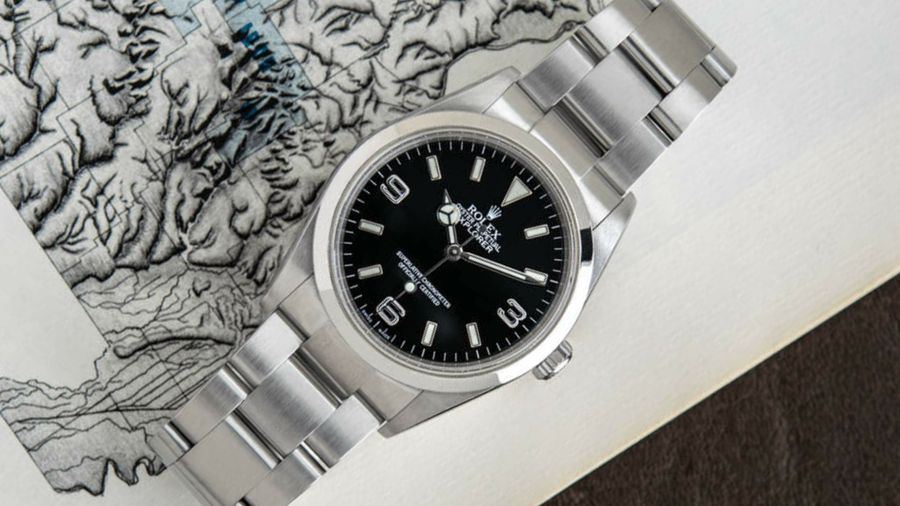Iconic Russian Space Watches
During the cold war, the USSR and USA competed fiercely in the Space Race to get to the Moon. This competition resulted in historic events achieved on both sides. On the Russian side, Yuri Gagarin achieved the first flight aboard Vostok 1 in the outer space, whereas Alexei Leonov successfully walked in space outside of the spaceship during the Voskhod 2 mission.
Space exploration at that time relied on very primitive technology and had a very low success rate: the pioneers of space travel faced a lot of challenges during their missions, making their achievements even more extraordinary. This article focuses on the watches that were used in Russian Vostok, Voskhod and Soyuz space programs and worn by cosmonauts Gagarin, Leonov and Gubarev.
Sturmanskie “Gagarin” 15J (1949)
On 12 April 1961, Russian cosmonaut Yuri Gagarin took off from Baikonur aboard the space module Vostok 1 to explore space for the first time. On his wrist is said to be a Sturmanskie. This Soviet brand was created in 1949 and its watches were produced for the Russian Air Forces only. Gagarin and his fellow pilots were issued with a Sturmanskie after graduating from the Air Force Pilot School. It is said that the model that Gagarin was supposedly wearing during his mission in space was made between 1949 and 1954. The first space watch has a manual wind 15 Jewels movement, which is a central second movement from the 1st Moscow Watch factory (1MChZ) and based on the further development of the Pobeda K-26 movement.
- Ref: Sturmanskie “Gagarin” 15J 1949
- Diameter: 33.00 mm
- Thickness: 12.00 mm
- Lug width: 16.00 mm
- Caliber: 1st Moscow Watch factory 15J
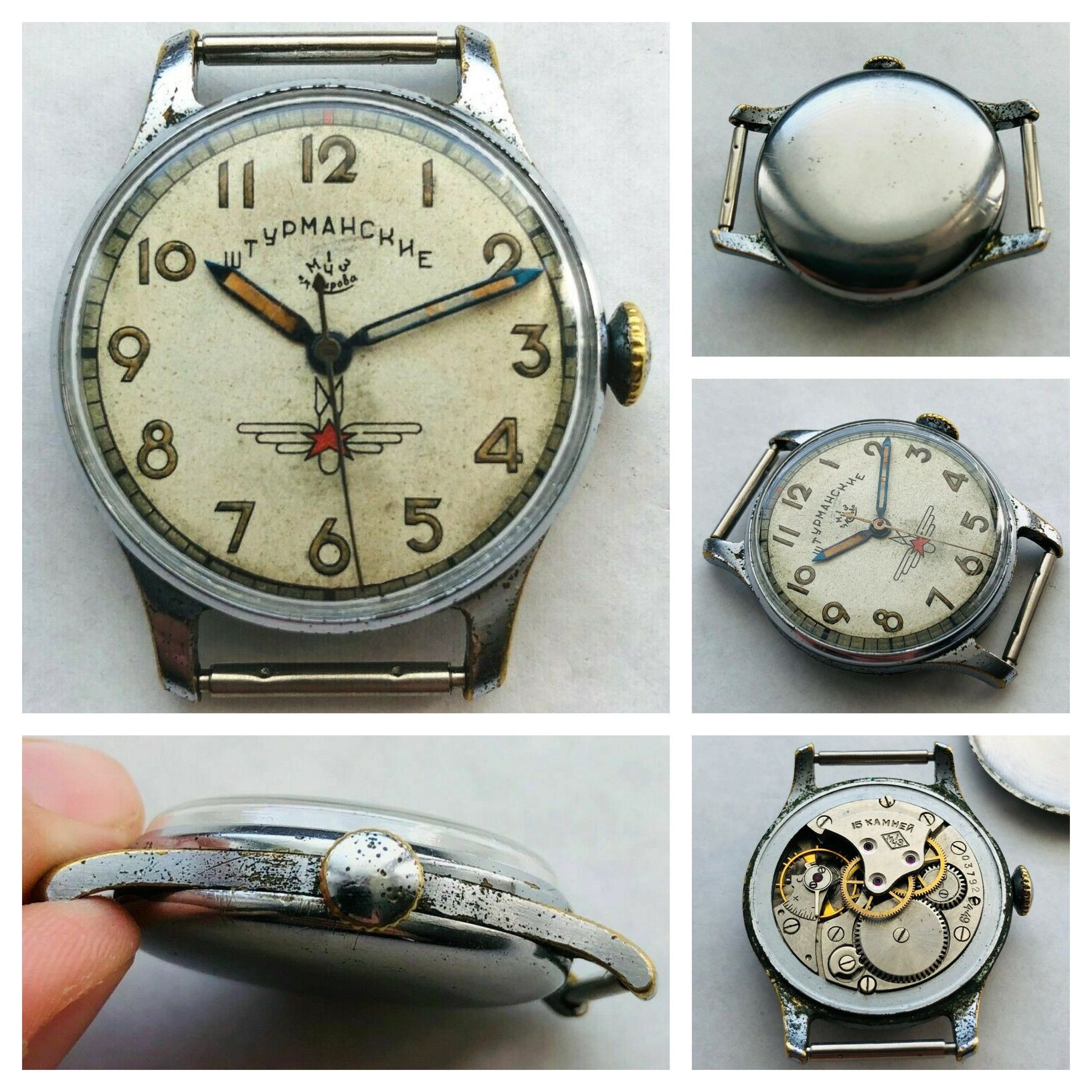
The Soviet Union purchased the machinery to produce the watch from the French watch manufacturer Lip which previously used it to produce the Lip R26 movements. Sturmanskie updated the design by adding a central second complication and a hacking feature that allowed the watch to be precisely stopped and synchronized with a given time signal.
This Russian space watch was relatively small, with 33mm in diameter and a thickness of 12mm. The Sturmanskie brand still exists today, the core aspects of the model that Gagarin wore during his space mission are still present in the latest watches produced by this Russian manufacture.
Strela (СТРЕЛА) Chronograph
The original Strela Sekonda was worn by Soviet/Russian cosmonaut Alexei Leonov who became the first human to walk in space during the Voskhod 2 mission in 1965. The first Strela chronograph model was introduced around 1959 and at first, it was only available to the Soviet Air Forces and a few higher-ranking officials. Leonov was wearing Strela chronographs during mission preparation, flight training, and missions.
The now famous Russian space watch is housing the hand-wound column-wheel chronograph caliber 3017 - based on the Swiss Venus 150 / 152 calibers. The 3017 movement was later replaced by the 3133 manual wind chronograph movement made by Poljot (formerly First Moscow Watch Factory).
- Ref: Original Strela СТРЕЛА Chronograph
- Diameter: 36.00 mm
- Thickness: 14.00 mm
- Lug width: 18.00 mm
- Caliber: Poljot 3017

The model that Alexei Leonov wore in space has a cream dial with golden hour markers. The Strela brand name was written in Cyrillic: СТРЕЛА, which means “arrow”. It had Arabic numerals markers at 12 and 6 o'clock.
The watch has two registers, 45 minutes elapsed time and constant seconds hand and a central chronograph hand for measuring the elapsed seconds. The Strela has a chrome-plated case and a stainless steel snap case back. This historical timepiece has a diameter of 36mm, is 14mm thick and has a lug width of 18mm. On the original model, the dial and hands are protected by a plastic glass.
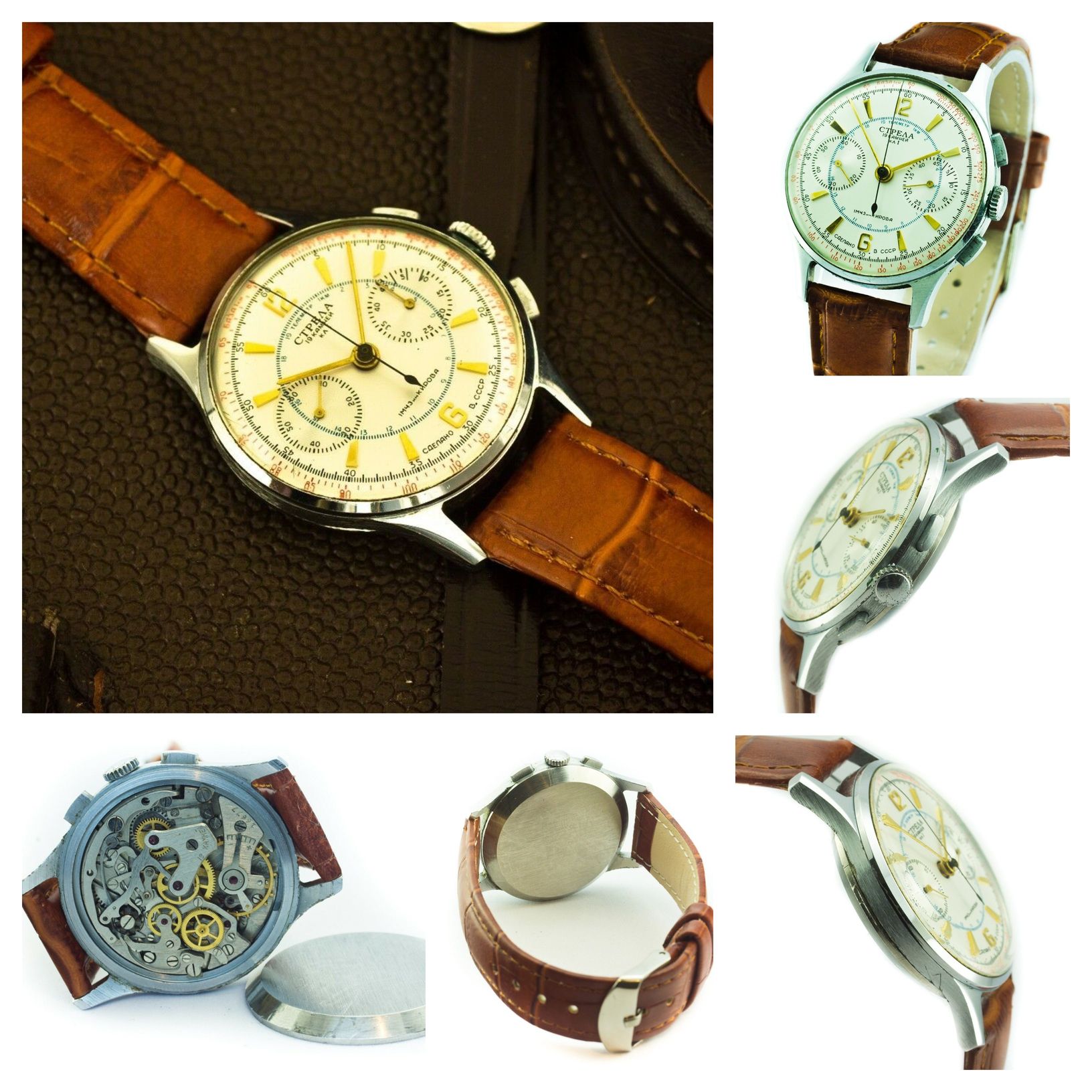
Leonov and his crew member Belyayev faced a lot of challenges during their mission: the pressure of Leonov's spacesuit increased uncontrollably, making it balloon and very hard to move and go back to the airlock. He entered the airlock head-first instead of feet first unlike instructed, relying on the door of the airlock to close itself automatically.
Unfortunately, the automatic door failed to close: with oxygen running out, he took the decision to depressurize his suit in the still-open airlock to be able to turn around and close the door manually, this exposed him to decompression thickness and he nearly had a heatstroke as his core body temperature increased by 1.8°C (3.2°F) in 20 minutes.
Later on, a crack in the hull made their oxygen system pump dangerous amounts of pure oxygen in their spaceship, threatening both men to trigger an explosion and almost killing them by oxygen poisoning: after temporarily powering down electrical instruments they managed to regulate the oxygen supply while having hallucinations and nausea. Several hours passed before the team saw oxygen levels returning to normal.

As the spaceship was supposed to return to Earth, the two cosmonauts discovered its automatic re-entry system no longer worked. So the pair fired the craft’s re-entry rockets manually. This should have separated the landing capsule, containing the team, from the orbital module. However, something went wrong: the orbital module was still connected to the landing module by a communications cable. As a result, both modules were spinning rapidly during descent.
Fortunately, the heat of re-entry burnt through the communications cable, saving Voskhod 2 from destruction: the landing module separated and its parachutes were deployed.
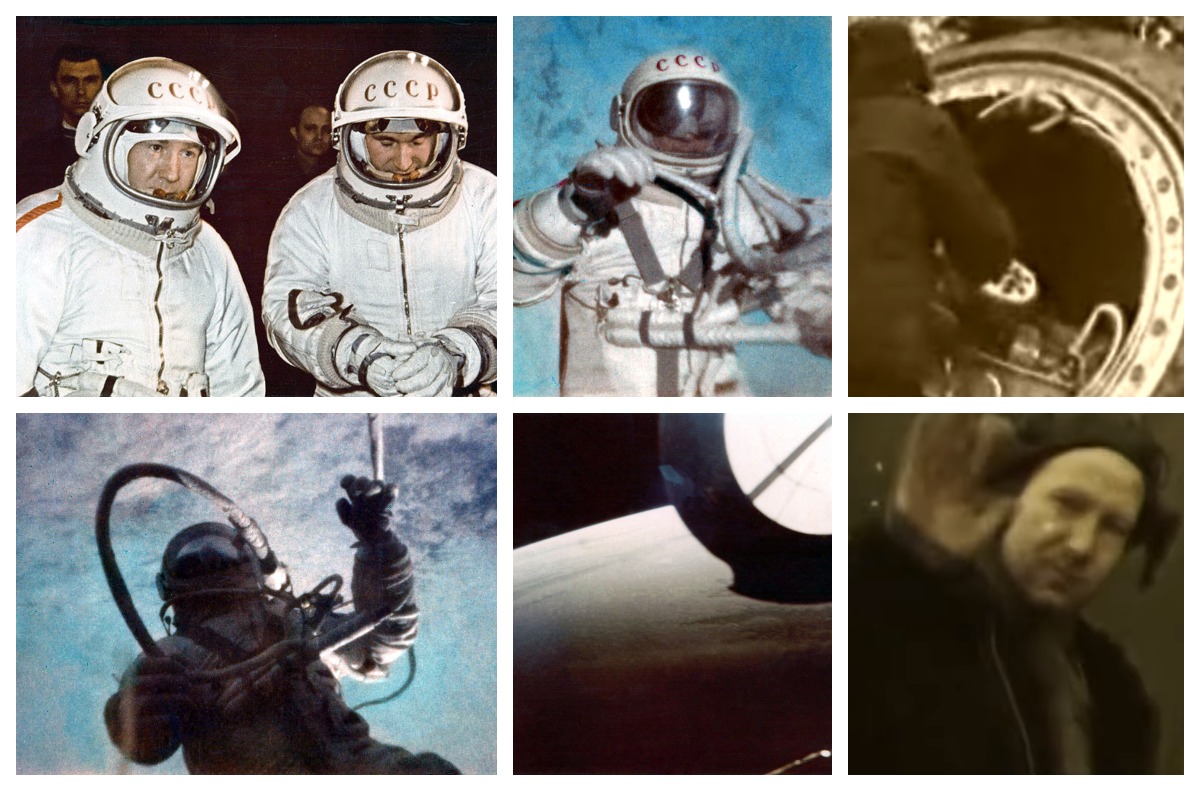
Eventually, their capsule landed into the Ural mountain range, far from the expected landing site. Leonov and Belyayev both knew that bears and wolves, made aggressive by mating season, lived in the area. However, the spacecraft carried a pistol with some ammunition.
Although the cosmonauts were quickly located by aircraft, the area was so heavily forested that helicopters could not land. Night arrived, the temperature dropped to -5 °C (23 °F). The electrical heater would not work, forcing cosmonauts to spend a freezing night in the capsule as the spacecraft's hatch had been blown open by explosive bolts.
A rescue party arrived on skis the next day. Together they chopped wood and built a small log cabin as well as an enormous fire. After a more comfortable second night in the forest, the cosmonauts skied to a waiting helicopter several kilometers away and flew first to Perm, then to Baikonur for their mission debriefing.
At the time, the Russians hailed the mission as a complete success. In fact, it had come close to ending in disaster, though these near-catastrophes were not revealed until many years after the return of Voskhod 2.
The historical Strela was featured extensively in the 2017 Russian film “The Age of Pioneers” (Russian: Время первых), also known as “The Spacewalker”, starring Yevgeny Mironov as Alexei Leonov and Konstantin Khabensky as Pavel Belyayev. This watch is, therefore, an amazing Omega Speedmaster alternative: on the 18th of March 1965, it's the first chronograph to have been in space!
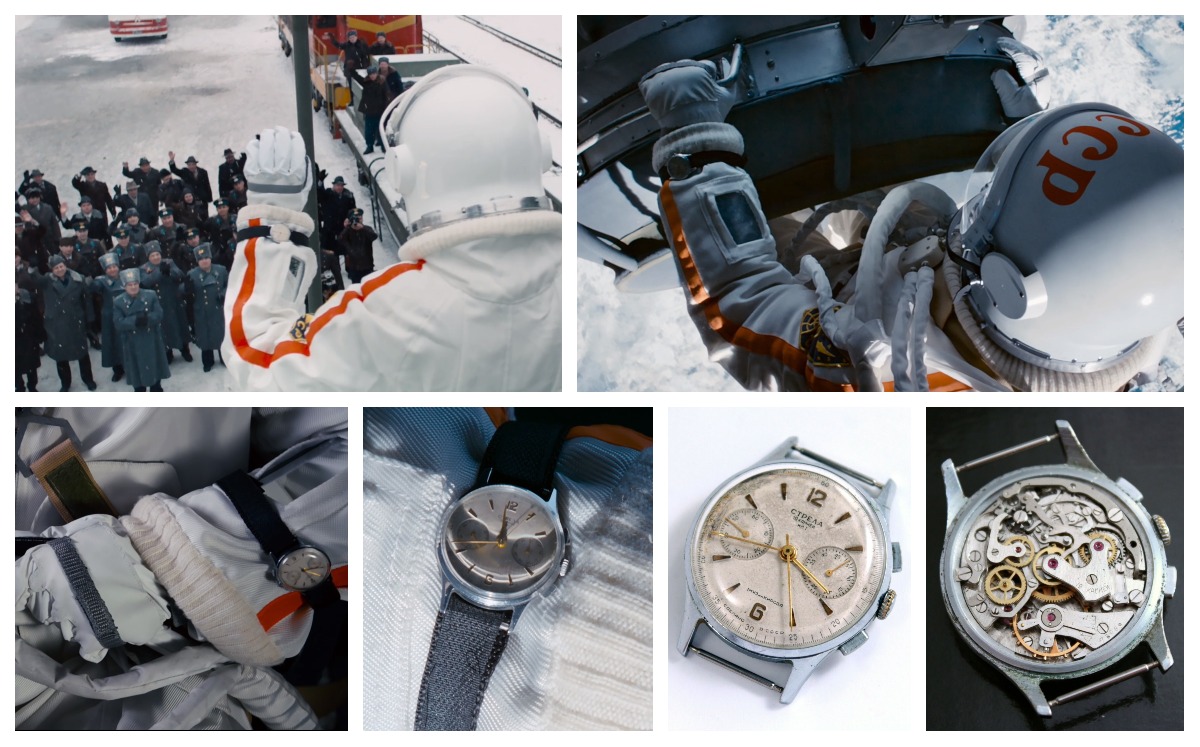
Strela Sekonda Chronograph
A Strela model with the Poljot 3017 column-wheel chronograph movement was introduced in the 1970s and was used in space by Russian cosmonaut Alexey Alexandrovich Gubarev during the Soyuz-28 mission. Gubarev and his colleague Vladimir Remek – the first non-Soviet, non-American to travel to space – were launched aboard Soyuz-28 on March 2, 1978. To put things into context, this is after the American's moon landing (1969) and Leonov's Spacewalk (1965). The crew docked with the orbiting Salyut-6 space station. On Gubarev’s wrist, a black STRELA (labeled SEKONDA). Established in 1966, Sekonda started out as a British brand offering a collection of mechanical watches originally manufactured in Russia.
- Ref: Strela Sekonda Chronograph
- Diameter: 36.00 mm
- Thickness: 14.00 mm
- Lug width: 18.00 mm
- Caliber: Poljot 3017
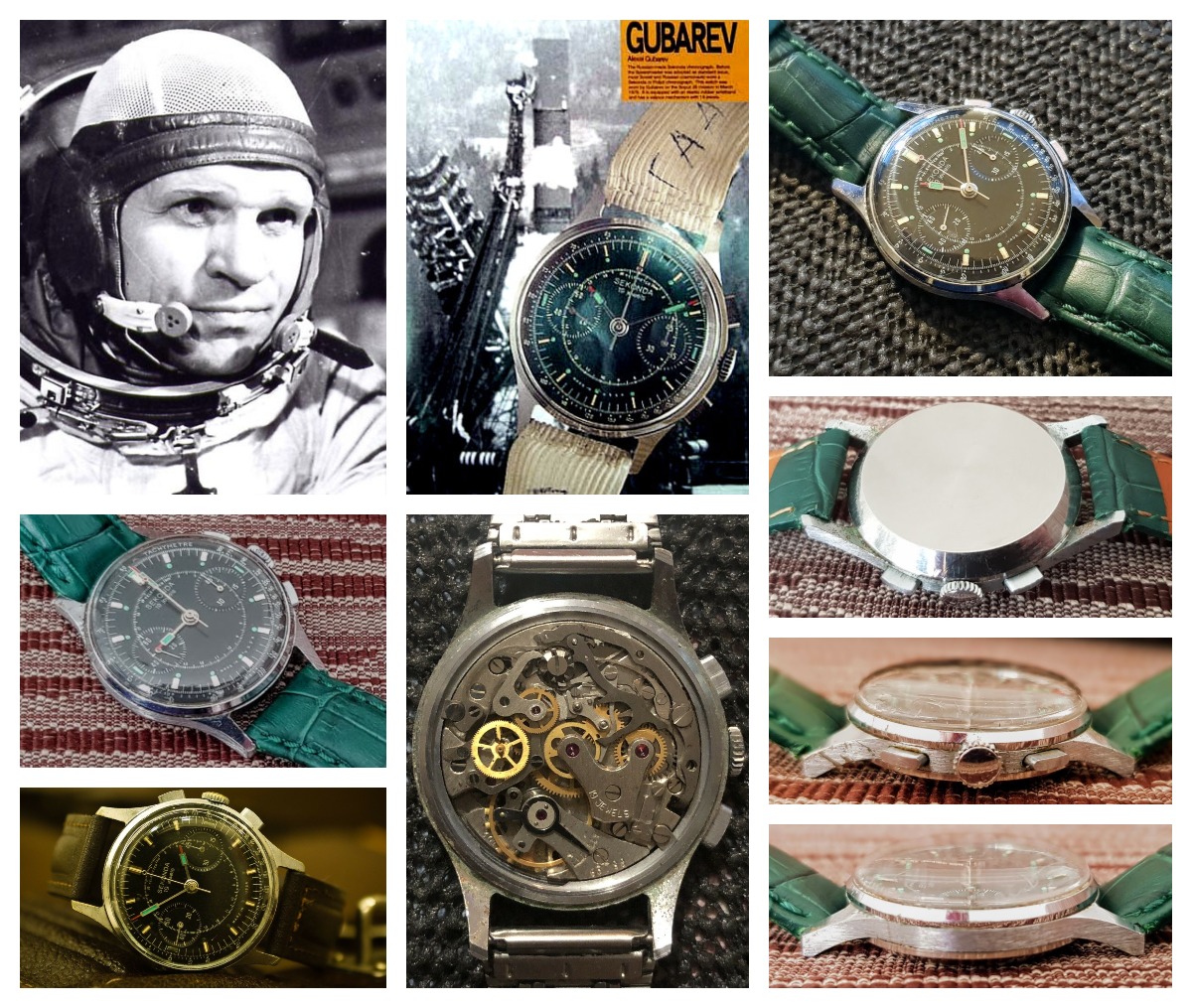
This model can be found with a white or black dial. The design of this watch is quite different from the first Strela chronograph from 1959, with silver luminescent hands that have a red tip and lumed hour markers which have a distinctive green color. The black Strela Sekonda looks great on a green or brown leather strap. We can assume that Strela produced this watch to be used as a tool rather than a jewel, with the highly contrasted display for enhanced visibility.

This vintage Strela Sekonda has a diameter of 36mm and a thickness of 14mm, it is not water resistant (unsurprisingly, like many vintage timepieces). In 1979 the Poljot 3017 movement got discontinued. It was replaced by the 3133 Poljot manual wind movement, which has an architecture very similar to the Valjoux 7733 and 7734 calibers as the equipment to manufacture those movements was imported from Switzerland.
Strela (СТРЕЛА) Cosmos Chronograph
The historic Strela chronograph model has been reissued by the Strela company now based in Munich (Germany). The owners of the Strela company are of Russian origin and the company prides itself to be closely tied to Russian watchmaking, using Russian movements from Poljot/MakTime. However, some models have been introduced with Seagull ST19 Chinese mechanical movements. Strela CO38CYB-S models are equipped with a Poljot 3133 hand-winding movement (system Valjoux 7734) featuring a date function and a 48h power reserve.
- Ref: Strela CO38CYB-S
- Diameter: 38.00 mm
- Thickness: 14.00 mm
- Lug width: 20.00 mm
- Caliber: Poljot 3133

Those modern Strela editions have a sapphire crystal, a 20mm lug width (instead of 19mm) and a diameter of 38mm. Moreover, they provide a water resistance of 50m (5ATM). CO40LAB models have a diameter of 40mm and no date with a manual wind Seagull ST19 caliber inside. The CO42 models are for bigger wrists with a 42mm diameter, reference CO42CYB being a good example of that. These Strela Cosmos models definitely keep the same spirit as their ancestors from the 1960s and offer great mechanical timepieces for the price. The black dial model can be considered as a cheaper (and Russian) Omega Speedmaster alternative. Retailing at around $700, those mechanical chronographs are worth considering!
- Ref: Strela CO40CYW, CO40LAW, CO40LAB, CO40CYB
- Diameter: 40.00 mm
- Thickness: 14.00 mm
- Lug width: 20.00 mm
- Caliber: Seagull ST19
